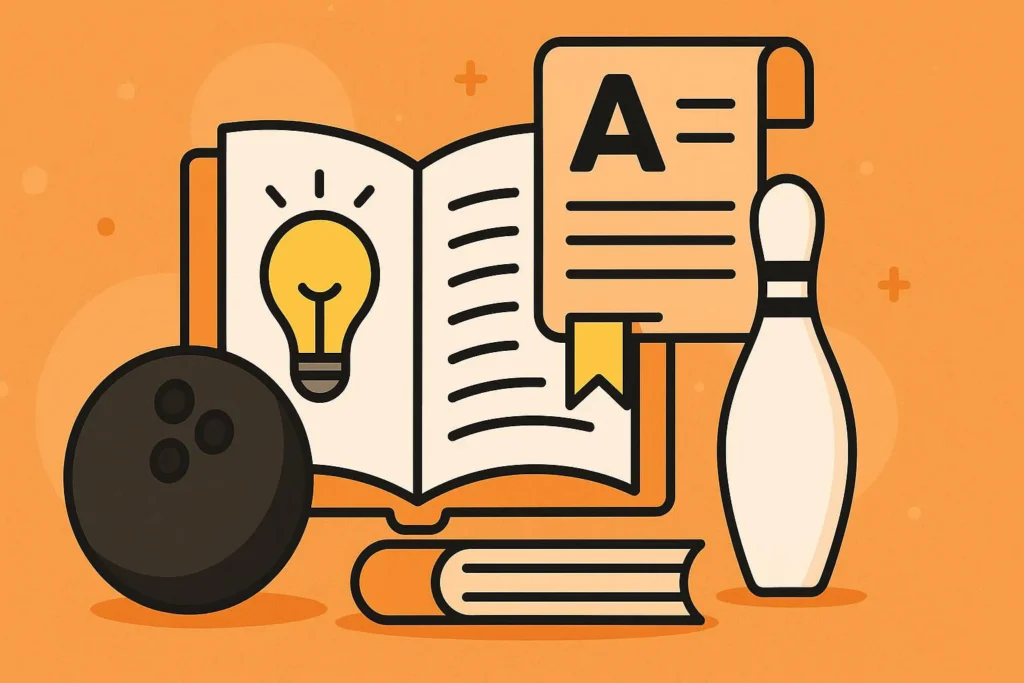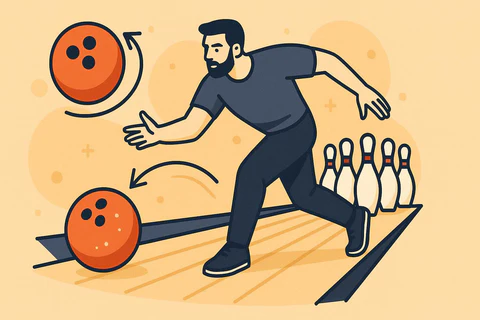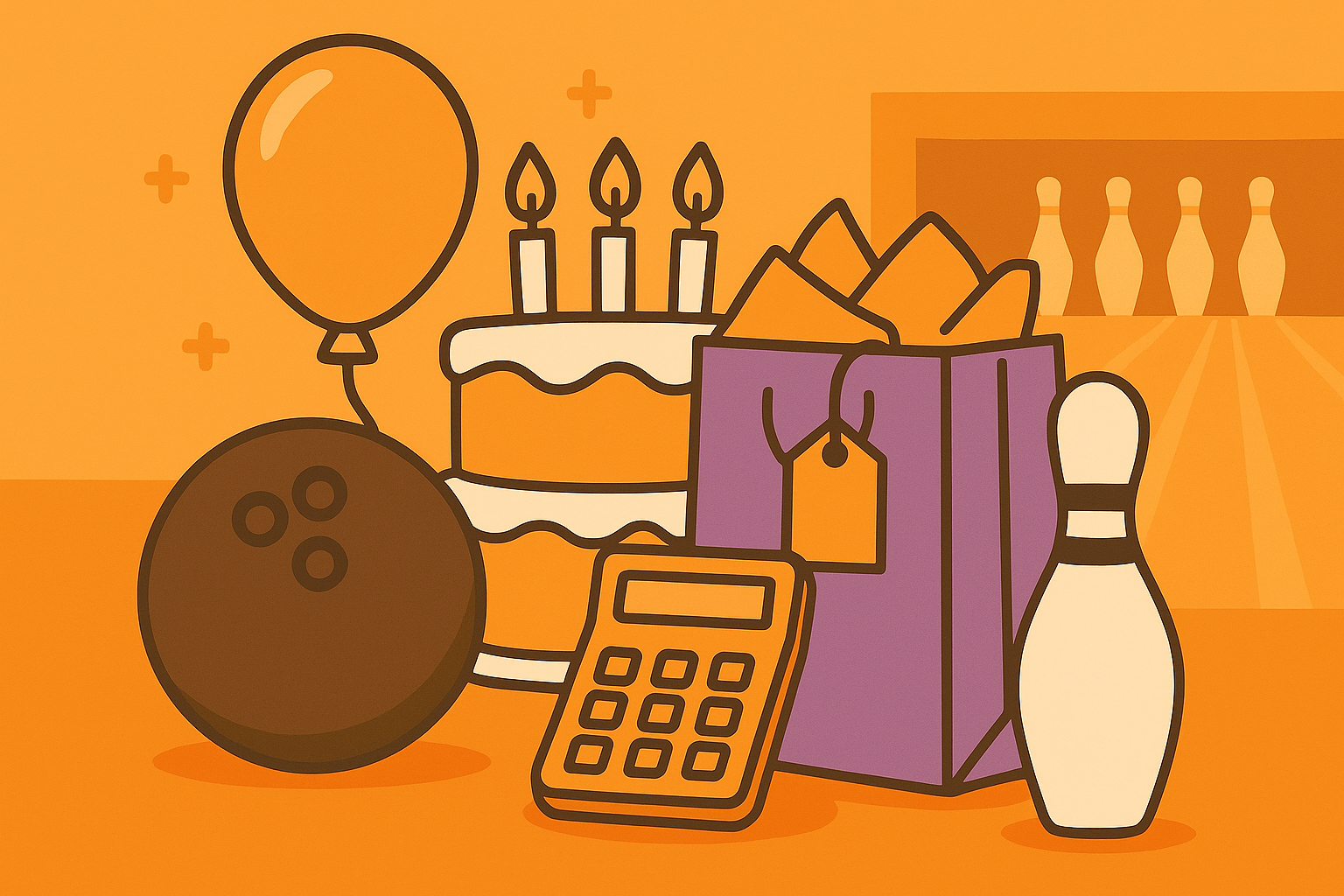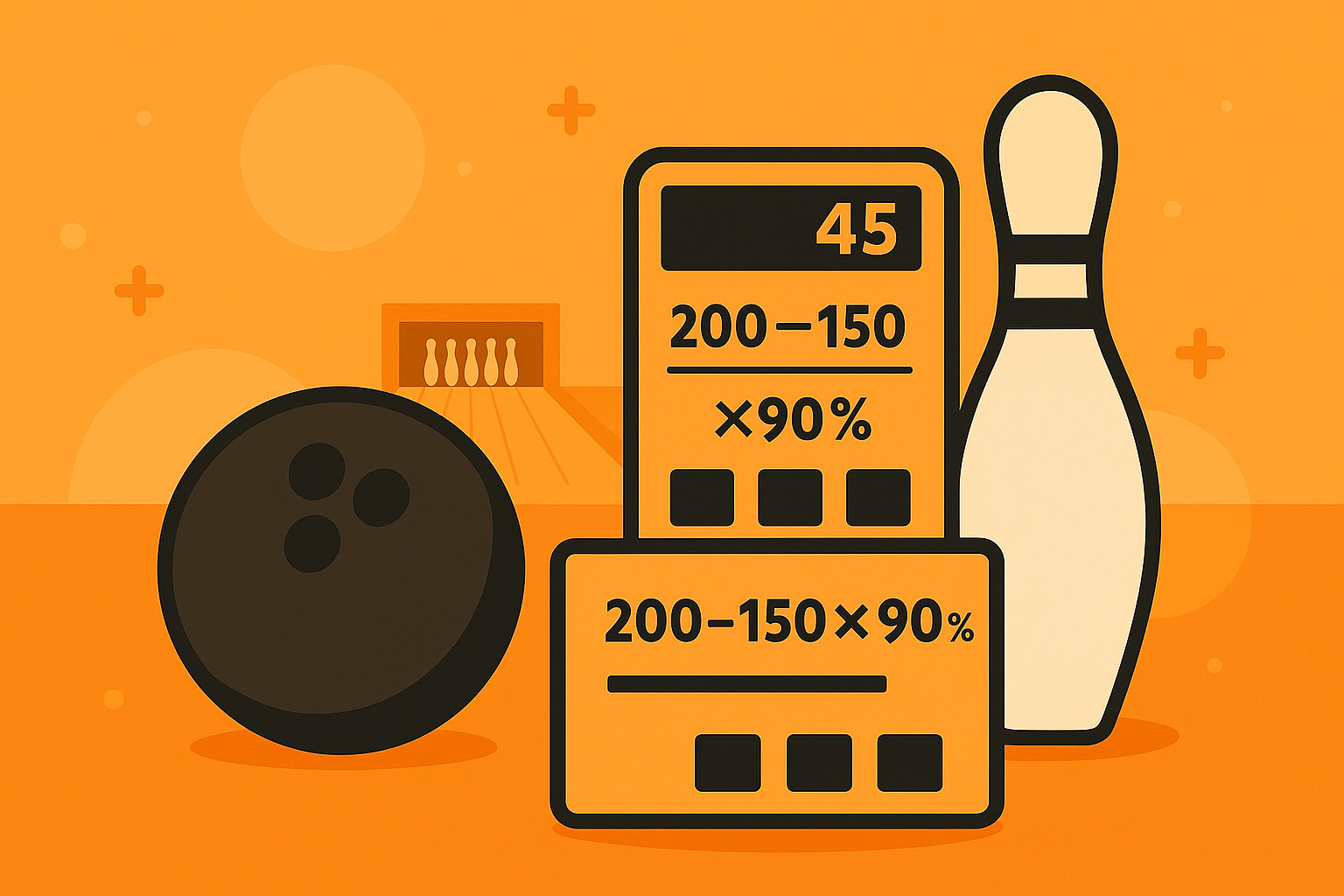One minute you’re tossing a ball down a glossy lane for fun, and the next, you’re wondering why your ball keeps veering left, what oil patterns have to do with anything, and why someone just called their strike a “hambone.” It’s a game with layers—technical, strategic, and cultural—and the deeper you go, the more you realize how much there is to learn.
And language? It’s everywhere. Whether you’re a weekend bowler who just wants to beat your friends or someone eyeing a league trophy, understanding the terminology can change how you play—and how you think about the game. Bowling has its own rhythm, its own slang, and its own set of rules that go far beyond just knocking down pins. Knowing the difference between a split and a sleeper, or why your ball hooks more on one lane than another, can be the difference between frustration and finesse.
This glossary isn’t just a list of terms—it’s a roadmap through the world of bowling. From the basics to the intricacies of oil breakdown, we’ve built this guide to help you feel more at home on the lanes. Whether you’re lacing up for the first time or chasing your next 300, this is your go-to reference for all things bowling.
Basic Bowling Terms Every New Bowler Should Know
If you’re just getting started, these are the words and phrases you’ll hear most often. They’re the foundation of bowling vocabulary and will help you understand what’s happening around you—on the lanes and on the scoreboard.
Lane
The polished surface where the ball is rolled. It’s exactly 60 feet from the foul line to the head pin and typically 41.5 inches wide. Lanes are either made of wood or synthetic materials, and they’re coated with oil to influence ball movement—a detail that becomes more important the more you play.
Pin Deck
The area at the end of the lane where the pins are set up.
Open Bowling
Non-league, casual bowling that’s open to the public.
Approach
The area behind the foul line where bowlers take their steps before releasing the ball. It’s usually about 15 feet long, and consistency here is key. Your approach sets the tone for your entire shot.
Foul Line
Cross it during your delivery, and your roll doesn’t count. It’s the line that separates the approach from the lane, and stepping over it—even by a toe—results in a foul and a score of zero for that shot.
Gutter
The channels on either side of the lane that collect errant balls. Gutter balls are common for beginners, but even pros throw them occasionally—especially on tough oil patterns.
Pins
The ten white targets set up in a triangular formation at the end of the lane. They’re numbered from 1 to 10, starting with the head pin. The goal is to knock down as many as possible with each roll.
Frame
A game of bowling has ten frames. In each frame, you get up to two rolls to knock down all ten pins—unless you roll a strike, in which case you only need one. The tenth frame is special: if you roll a strike or spare, you get an extra roll (or two) to finish.
Strike
All ten pins go down on your first roll. It’s the best possible outcome in a frame and earns you bonus points based on your next two rolls.
Spare
You knock down all ten pins using both rolls in a frame. It’s not as flashy as a strike, but it still earns you a bonus from your next roll.
Open Frame
A frame where you don’t knock down all the pins. No bonus points here—just the raw total of pins knocked down.
Split
A challenging pin configuration left after the first roll, where two or more pins remain standing with a gap between them. The 7-10 split is the most infamous—converting it is rare and often replayed on highlight reels.
These terms are your entry point. Once you’re comfortable with them, you’ll start to notice the subtle strategies and decisions happening in every frame.
Understanding Bowling Scores and How They Work
Bowling scoring isn’t complicated, but it’s not exactly intuitive either. It rewards consistency and precision, and once you understand how it works, you’ll start to see your own progress more clearly.
Perfect Game
A score of 300, achieved by rolling 12 consecutive strikes. It’s the pinnacle of bowling achievement and requires not just skill, but also focus and a bit of luck.
Handicap
A scoring adjustment used in leagues to level the playing field between bowlers of different skill levels. It’s calculated based on your average and a league-specific base score. Think of it as a way to make matches more competitive and fun.
Scratch Score
Your raw score, without any handicap applied. In scratch leagues or tournaments, everyone competes on equal footing—no adjustments.
Series
The total score from a set of games, typically three, bowled in a single session. It’s a useful metric for tracking your consistency over time.
Turkey
Three strikes in a row. It’s a milestone that often earns a cheer—or at least a high five—from your teammates.
Four-Bagger, Five-Bagger, and Beyond
These terms refer to consecutive strikes. A four-bagger is four in a row, a five-bagger is five, and so on. Some bowlers use creative names—like “hambone” for four strikes or “wild turkey” for six.
For a deeper breakdown of how scoring works, the USBC scoring rules offer a great technical reference.
Bowling Equipment: What You Use and Why It Matters
Your gear isn’t just about comfort—it directly affects your performance. From the ball you throw to the shoes you wear, each piece plays a role in your game.
Bowling Ball
Not all balls are created equal. They vary in weight (usually between 6 and 16 pounds), coverstock (the outer shell), and core design. The core influences how the ball moves, while the coverstock affects how it grips the lane. Serious bowlers often own multiple balls for different lane conditions. We’ve got a comprehensive guide on how to find the best bowling ball to suit your needs.
Bowling Shoes
These aren’t just for show. One shoe is designed to slide, the other to brake—helping you control your approach and release. Rental shoes work fine for casual play, but investing in your own pair can improve consistency.
Grip
How your fingers fit into the ball. Most bowlers use either a conventional grip (fingers inserted to the second knuckle) or a fingertip grip (fingers inserted to the first knuckle). The latter allows for more revolutions and hook potential.
Thumb and Finger Holes
The three holes drilled into the ball for your thumb and fingers. Custom drilling based on your hand size and style can dramatically improve comfort and control.
Wrist Support
A brace worn to stabilize your wrist during release. It’s especially helpful for beginners or bowlers recovering from injury, and it can promote better form.
Ball Cleaner
Oil and grime build up on your ball over time, affecting how it reacts on the lane. Regular cleaning keeps your ball performing consistently.
For gear reviews and recommendations, Bowling This Month is a trusted resource among competitive players.
Lane Conditions and Oil Pattern Terminology
The lane might look like a smooth, shiny surface—but it’s actually a complex playing field. Oil patterns affect how your ball behaves, and understanding them is crucial as you level up.
Boards
The lane is divided into 39 vertical boards, each about an inch wide. Bowlers use these as visual guides for targeting and alignment.
Arrows and Dots
Arrows are located about 15 feet down the lane and help with aiming. Dots are found on the approach and near the foul line, helping you position your feet consistently.
House Pattern
The standard oil pattern used in most recreational centers. It’s designed to be forgiving, with more oil in the center and less on the edges—guiding the ball toward the pocket.
Sport Pattern
A more challenging oil layout used in competitive play. The oil is distributed more evenly, requiring greater precision and consistency.
Break Point
The spot on the lane where the ball begins to hook. Identifying your break point helps you adjust your line and angle for better pin action.
Oil Carrydown and Transition
As balls roll down the lane, they move oil around—especially toward the back end. This changes how the lane plays over time, a phenomenon known as transition. Adjusting to it is part of the game.
For a technical look at oil patterns, the USBC’s oil pattern library is a goldmine.
Bowling Styles and Delivery Techniques
How you throw the ball matters just as much as where you aim. These terms describe the mechanics and styles of delivery that shape your game.
Hook
A ball that curves as it travels down the lane. Most advanced bowlers use a hook to increase their chances of striking by hitting the pocket at an angle.
Straight Ball
A ball that travels in a straight line. Easier to control, but less effective at generating pin action.
Rev Rate
The number of revolutions per minute a ball makes. Higher rev rates create more hook potential and are often associated with power players.
Axis Tilt and Rotation
These describe the angle and direction of the ball’s spin. They affect how the ball transitions from skid to hook to roll.
Release and Follow Through
The release is the moment the ball leaves your hand. A clean release leads to consistent shots. Follow-through—your arm motion after release—helps with accuracy and power.
Competitive Bowling Terms and League Lingo
Once you’re bowling in leagues or tournaments, the language shifts a bit. Here’s what you’ll hear in more competitive settings.
Anchor
The last bowler in a team lineup, often the strongest player. They bowl under pressure and can decide the outcome of a match.
Brackets
Side competitions held during league or tournament play. Bowlers pay to enter and compete in a single-elimination format for cash prizes.
Sandbagging
Intentionally bowling below your ability to lower your average and gain a higher handicap. It’s frowned upon and can lead to disqualification.
Scratch League
A league where no handicaps are used. Scores are based purely on performance.
Bowling Slang and Culture
Bowling has its own personality, and nowhere is that more obvious than in its slang. These terms won’t show up on a score sheet, but they’re part of the culture.
Brooklyn Strike
A strike where the ball hits the opposite side of the head pin than intended—left side for right-handers, right side for left-handers. It’s often accidental, but still counts.
Messenger
A pin that flies across the deck and knocks down another pin, often saving a strike. It’s one of the most satisfying sights in bowling.
Deadwood
A pin that remains on the lane or in the gutter after a roll and needs to be cleared before the next shot. It can disrupt play if not removed.
The ideal spot to hit for a strike—between the 1 and 3 pins for right-handers, and 1 and 2 for left-handers.
Bedposts (7–10 Split)
When only the far-left (7) and far-right (10) pins remain. It’s one of the hardest shots in bowling, nicknamed because the two pins resemble the posts of a bed.
Greek Church
A nearly impossible split that leaves three pins on one side and two on the other (like 4-6-7-9-10). It looks like a row of steeples, hence the name.
Sleeper
A pin hidden directly behind another pin (like the 8 behind the 2, or the 9 behind the 3). Easy to overlook if you don’t line up your shot correctly.
Fast Eight
When you hit the pocket solidly, but only eight pins go down—often leaving the 4–7 or 6–10. Bowlers love to groan about this one.
Chicken Wing
A release where the bowler’s elbow sticks out, making the arm resemble a chicken wing. Usually unintentional and not very effective.
Learning the language of bowling is more than trivia—it’s a tool for confidence. Understanding the terms helps you follow the action, talk strategy, and celebrate the game’s quirks like a pro. So next time you’re at the lanes, you won’t just be rolling the ball—you’ll be speaking the language of bowling fluently.






